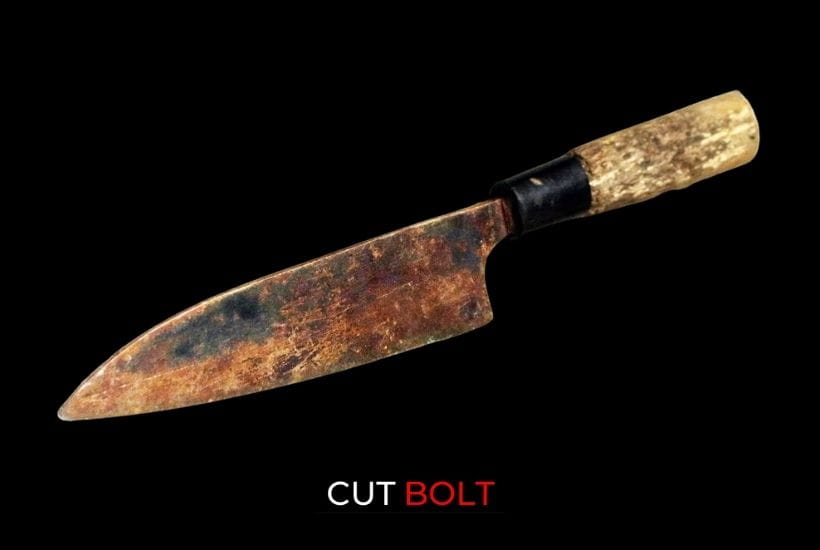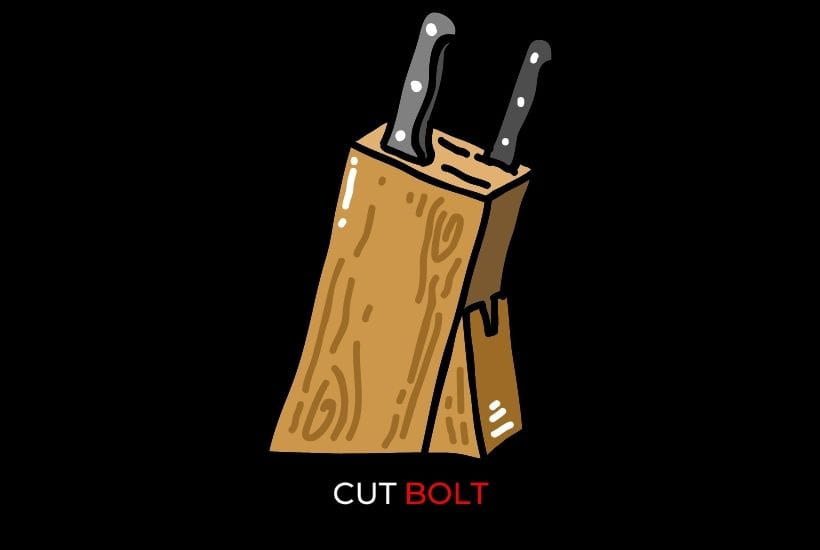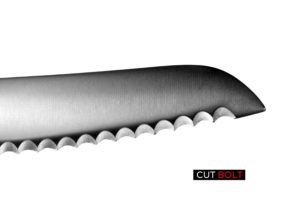Whether you are a pro chef or a beginner high-quality kitchen knives are vital for a successful kitchen. It is best to use a high carbon steel knife to cut food. It has a more durable design, it holds an edge longer and it’s easier to sharpen. Today we will discuss on carbon steel knife care.
The best knife is one made of carbon steel. But they can get rust easily if left wet or not taken care of. You should know how to care for a carbon steel knife if you own one. If you neglect this important step, your knives will quickly start to rust.
Don’t worry, carbon steel knives are easy to care for and can be sharpened. That’s why they are a popular kitchen knife among food cooks. There are a few tips on how to care for carbon steel knives and how to extend their life span. Read on to learn the best way to care for a carbon steel knife and how to avoid corrosion.

Why You Should Care for Your Carbon Steel Knife
Prevention is better than cure – if you know the basics of the material you are using you can save it from ruin. So knowing a few details about carbon may help you in many ways.
In order for the steel to be strong, it needs to be hardened. Each type of steel will have some amount of carbon. Carbon is one of the hardest elements on the periodic table, and the amount can tell us a lot about the quality of the steel.
Low carbon means there is 0.3% or less carbon in the alloy. Medium carbon is typically between 0.4% to 0.7%, and high carbon is generally considered 0.8% and above.
Low carbon steel means the alloy contains 0.3% or less carbon. High carbon steel means the alloy has more than 0.8% of carbon present in it. In medium carbon steel, you will find 0.4-0.7 percent of carbon.
For a better understanding of carbon steel and stainless steel, you can read carbon vs stainless steel.
When chopping food, you’ll want to have a knife that will deliver a nice, thin and clean cut. This is why chefs prefer using carbon steel knives over any other material-based knives.
Carbon Steel Knife is an excellent material for making knives because it is hard, but easily sharpenable and can keep its sharp edge for a long time.

Articles you may find useful:
- Carbon vs Stainless Steel Knife
- Best Knives for Cutting Vegetables
- Best Knives for Cutting Raw Meat
- G10 vs Micarta for knife handles
Knife Care Basics: How to Care for a Carbon Steel Knife?
Knife care has a few basic rules you need to follow instead of buying a new knife every once in a while. However, the right care of your knife depends not only on its composition but also on the weather and the environment you use it.
1. Understanding Patina, Rust, and the Correct Knife Maintenance
Carbon steel knives tend to get patina over time. No matter how much you care for them. What is patina? Patina is a thin grey-blue/dark film that forms on the knife as a result of exposure to air. Sometimes it can be due to acidic foods.
So how to protect your knife from patina? Don’t worry patina is a good thing, you don’t need to get rid of it. The good thing is patina saves your knife from corrosion.
Rust! God! Matter of concern… Rust can damage your knife severely and unsuitable to cut food with it. If your knife has a patina on it, the chances of rust is quite less.
How to prevent RUST?
- Keep your knife clean (dry well after you wash it, wipe with a cloth properly).
- It is good to oil your blades after regular intervals.
If you notice any rust on the blade, remove them instantly.
Now that you know both patina and rust let us move to the actual “how to care for a carbon steel knife section”.
2. Clean Your Carbon Steel Knives as You Cook
If you don’t clean your carbon steel knives, they’ll rust and get dull over time. But if you follow the right steps to clean them, you’ll be able to keep your knives in perfect shape for years to come.
- I keep a damp kitchen towel or a washcloth on my stove top. Wipe the knife on both sides on the damp cloth every time I’m finished using it so that it will stay sharper longer.
Acidic foods are the biggest enemies of carbon blades. If you have to cut an acidic food with your carbon steel knife, then make sure to rinse the knife quickly after each use.
How to wash your knife?
- Use a soft cotton cloth to wipe out leftovers from the surface of the blade.
- Don’t boil your blade! Just use lukewarm soapy water to wash.
- Rinse with clean warm water.
- Always hand-dry with a cotton cloth instantly after you complete washing.
- Don’t forget to oil coat before you store back the knife.
- No dish-washing, please! Always hand wash your knife.

3. Dry the Knife Properly After Washing It
After washing your carbon steel knife, dry it thoroughly. If it’s been stored for a long time, you can wipe it down with a cloth and then rub with a soft microfiber towel. Be sure to dry it completely before putting it away.
This way, any food residue that could cause rusting is removed and you are much less likely to have to deal with rust on your blades. No matter what kind of carbon steel knife you have, it is important to regularly clean your carbon steel knife.
4. Oil your knife
Keeping the blades of carbon steel knives protected is an important part of ensuring they remain safe to use. Cooking oils (olive, canola, etc), in particular, are very effective at keeping them free of rust and corrosion and can be used safely with them.
However, cooking oils are sticky, they can catch and gather dust and other micro-particles on the blade. Neither that is good to see nor hygienic.
We can use oil specially made for knives! There are natural and synthetic oils available, they help to prevent rust. Use them to oil your knife and keep the blade usable for a longer period.

5. Knife Sharpening and Honing – Caring for a Carbon Steel Knife
It’s possible to hone your knife to almost perfect sharpness, but if you don’t do it often enough, you risk dulling it. If you do hone your knife often, you’ll maintain the perfect balance, and the knife will last for many years.
However, the frequency of honing and sharpening depends on the usage. If you are not using your knife daily then hone your knife after every 4/5 use.
Depending on usage a knife should be professionally sharpened once or twice a year.

6. Storing the knife properly
Knives are an essential kitchen tool that you’ll want to keep safely stowed and clean. To ensure the longevity of your knives, make sure you never casually toss them in the same drawer with other kitchen tools.
Even if you do so, put your knife inside a sheath. It is always better to put a few drops of oil inside the sheath, it will protect your knife.
We recommend storing knives inside knife block (wooden or magnetic knife strip). You will find some beautiful knife blocks within budget.
How to develop patina on a carbon steel knife

In the beginning, we learnt patina is good for carbon steel knives. Can we grow patina faster on our knives to protect them better? Yes, we can, follow the steps below:
This method is a great one to try out. It’s called Rust Bluing. In case your knife has caught some rust, you are halfway to it. Once this method was being used to grow patina over carbon steel to make a shotgun.
It uses the simplest chemistry of all, with only two simple compounds. When you mix iron oxide, hematite, and hydrogen, it produces magnetite (Fe3O4), which is chemically known as patina. This is one of the methods to create patina on metal surfaces.
The chemical reaction of boiling water (actually Hydrogen) can be used to do so.
To grow patina on the knife you need to have rust on it. By now you know what to do for getting rust on a carbon knife.
Put the knife in a good-quality vegetable steamer and then boil some water. A good quality vegetable steamer is deep, so you can put really large knives, such as chef’s knives, in them. You can also use any other pot that is deep enough to submerge the blade.
Be careful not to boil the handle of the knife.
Leave the blade for a good 10 to 15 minutes in the water. You will find a bluish/grayish patina has formed in place of the rust. Rub off any extra rust scrubbing with steel wool.
There are several other ways to develop patina on a knife but this one is easy. No money is required (in other methods you need to use vinegar, alcohol or other chemicals).
How to remove rust from carbon steel
Even if you keep your knives in good shape, they get a little rusty over time. It can be fixed with a little special care. If you want to make your carbon steel blade rust-free, you can use everyday products or buy a rust eraser.

1. Rust eraser
The best way to remove rust from a knife is to buy a rust eraser (if you don’t want natural products). These are compact, inexpensive, and easy to use. You should wet the eraser and rub the knife onto it following the direction of the grain.
2. Baking Soda
Baking soda and water can be combined to make a paste. Let the blade sit for 5 to 30 minutes after applying the paste. You can use a brush or sponge to scrub the blade if it is rusty. The blade needs to be wiped, washed, and dried properly.
3. Vinegar
Vinegar can be used to remove the rust from your carbon steel knife. Wrap the knife in a paper towel soaked in vinegar. Let the towel sit for 5 to 10 minutes. Then remove and scrub with a sponge. The rust should be gone.
4. Lemon Juice
You can use lemon to clean your knife. Mix equal parts of water and lemon juice and soak the blade in the solution for 10 minutes. If the blade is heavily rusty, use a sponge to clean the rust.
Final Words – Carbon Steel Knife Care
It takes a bit of care to maintain a carbon steel knife, that’s true. But they serve well. If anyone asks me “how to care for carbon steel knife” I tell them – care for it.
Do not dish wash, do not leave them dirty or wet. Always keep your knife clean and dry. Store carbon knives in a sheath if not in a knife block. Make sure you oil carbon knives to keep them usable.



